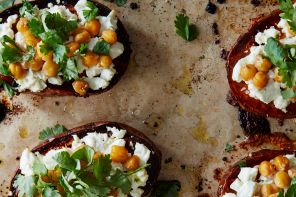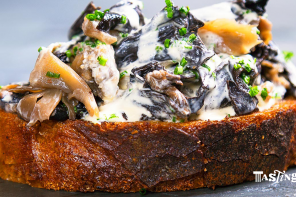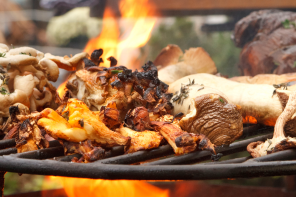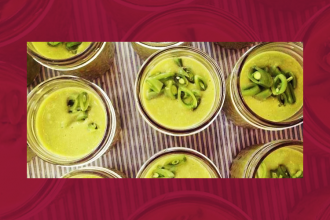Shakespeare is the man behind some of history’s greatest couples: Romeo and Juliet, Hamlet and Ophelia, Lady Macbeth and her tortured king, bread and wine. To clarify, not bread and wine side-by-side. Bread and wine together. The Merry Wives of Windsor was some of the first written documentation of the practice of raising our glasses to commemorate moments big or small, sad or celebratory. However, toasting had roots far before the Bard was dunking stale bread into his favorite red.
It’s difficult to pinpoint toasting’s true origins since most ancient cultures had adopted some version of the practice. In Ancient Greece and Rome, people began by pouring out a portion of their drinks to honor the gods and extended the tradition to celebrate their friends, as well. Drinking to each other’s health was a tradition that became so popular that, once, National Geographic reported that in the first century BCE, the Roman Senate passed a decree stating people must toast to Emperor Augustus at each meal.
In the 17th century, the term “toast” was first used because, yes, toast was the additional ingredient of choice. People thought it would help make wine less acidic while being a great way to freshen up old bread. In the 1800 and 1900s, toastmasters — a tradition that dates back to at least 500 to 700 B.C. in the country of Georgia — began to emerge more widely and were meant to moderate toasting and keep it from getting excessive. Back then, toasting was less about sips after a speech and more about chugging your entire glass. Without someone to run the show, toasting could become a very protracted, boozy affair.
In fact, getting very, very drunk was often the goal: early medieval Anglo-Saxon glasses were round at the bottom, forcing guests to finish their contents since they couldn’t be put down. Allegedly, in the 18th century, King George IV would break off the stems of wine glasses during parties so guests would, after starting their drink, be forced to chug the entire thing — simultaneously giving a new meaning to “King’s Cup.”
Naturally, not everyone was pleased with all the festivities. Anti-toasting clubs and movements arose, and though none of them gained serious momentum, they helped redefine the world of toasting. Highlights from T. Hughes’ The Toastmasters Guide included highlights like, “Prudence and temperance with claret and champagne” and, “May we never want a friend to cheer us, or a bottle to cheer him.”
Since then, toasting has evolved into the more restrained affairs we’re familiar with today, though some vestiges of the past still remain. In modern Georgia and Azerbaijan, the toastmaster still plays an important role. He or she showcases his or her oratory prowess by bringing the audience together with a moving, unifying speech.
If you ever feel the need to spice up your own toasting routines, do (or perhaps don’t) take a cue from the practices on the more bizarre end of the spectrum. Instead of making it Insta-official, men would show their devotion by cutting themselves, mixing their blood with their wine for a charming cocktail and toasting to their chosen ladies. To even better commemorate someone’s beauty, men forewent the blood and drank straight from the woman’s shoe. Romantic? Seems like a personal preference. Hygienic? Not at all. For now, I don’t see any problem with sticking to the tried and true: opening a bottle, raising a glass, and clinking it with friends and family — no shoes, or toast, necessary.








